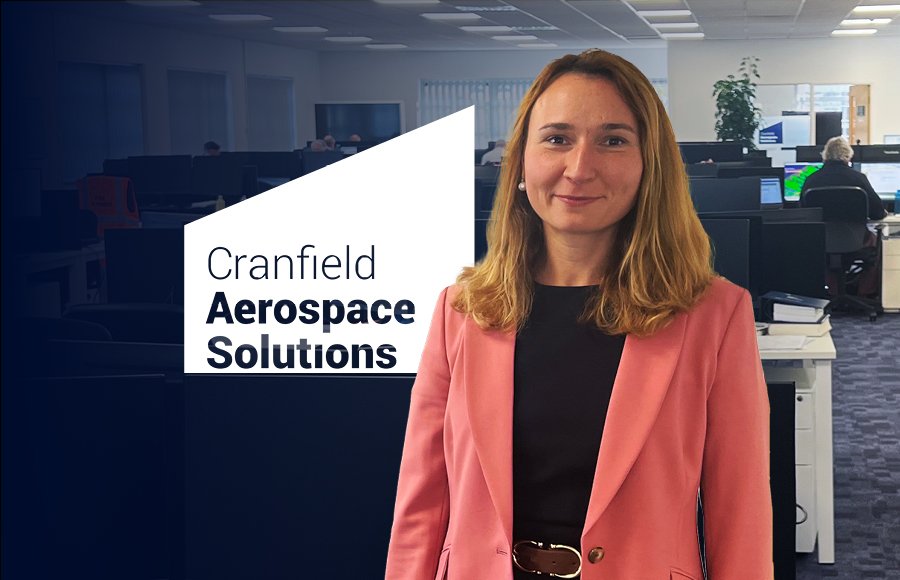Today marks National Engineering Day – a day which focuses on how engineering improves lives. It also falls within the Department of Transport’s newly launched Generation Aviation week which aims to attract diverse and talented people whilst inspiring the next generation.
As the aerospace industry races to develop solutions to address the urgent requirement to respond to climate change, how do we ensure we are able to secure the engineers of tomorrow that will drive and deliver the changes required? This was the central question put to Valentina Futoryanova, Head of Engineering at CAeS. In this piece, Valentina responds and offers her thoughts and perspectives on what is needed to attract the engineering talent that will meet the challenge.
The importance of attracting the best talent
If companies want to attract the best enquiring minds and harness the genuine enthusiasm displayed by young people in tackling the climate change challenge, they must first take a look at themselves and question if what they are doing to tackle the climate crisis is enough. From my experience, a lot of young people want to make their mark on developing a more sustainable world, but it’s not enough for companies to pay lip service to climate change while eking out the benefits of old technology. To attract the best enquiring minds of tomorrow, companies need to clearly demonstrate that they want to develop transformational technology. Only by doing this will they attract engineers in what is a competitive marketplace for talent.
Sustainability is inevitable for the younger generation
People often forget that younger generations view sustainability with a different lens to older generations. To people about to embark on a career – or even early-mid career professionals – tackling the climate change crisis is by no means viewed as insurmountable. Climate change is not ‘new’ to them, it is what they have always known and is therefore the central challenge to their working lives. It’s for this reason that the best engineers are actively choosing to work in sectors that are truly embracing change. We see it clearly here at CAeS; it is refreshing to interview younger candidates whose thirst and desire to change things shines through. We’re lucky in that what we are doing at CAeS – developing a fully certified, zero-emissions, hydrogen fuel-powered aircraft – piques their interest and attention. But from speaking with students and other colleagues in other sectors, I see a direct correlation between certain companies ambitions for change and their ability to attract and retain talent.
A higher level of consciousness around sustainability will force aviation/aerospace companies to move more quickly toward net zero
Who’s driving the pace around the transition to net zero? Is it the government, investors focused on ESG, companies themselves, or a generational shift in thinking? To an extent it’s all those different groups working in unison, but the generation shift in thinking spearheaded by the young is often the voice that is not at the top table. But as the young people of today enter the workforce of tomorrow, we need to take more notice of their thoughts and opinions. If young engineers increasingly wanting to train and take up roles that are contributing towards sustainability and new technologies, how do the big airlines for example continue to maintain a workforce working on traditional technologies in the period between now and 2050 when their existing fleets will still be in operation? And; why would
the best and brightest engineers want to train and work in a field that will become obsolete in their working lifetime? These are the questions that we must ask ourselves.
We cannot take our foot off the pedal
From my own perspective, I feel lucky to be playing a leading role in a company that is playing an integral role in decarbonising air travel and it is companies like CAeS that are countering notions that flying is considered dirty. Far from ‘flight shaming’, my team and the youth we are aiming to attract have a sense of pride in the contribution they are making and could make. But of course, we can’t take our foot off the pedal. Our work now is pushing the boundaries of science and engineering as we grapple with the difficult – but not insurmountable – challenge of integrating nascent technologies such as fuel cells, electric motors, and hydrogens storage tanks to make a true zero emissions aircraft. Nevertheless, we are also thinking about the next challenge – how are we going to scale this up to larger aircraft? What are the next technological challenges that will need to be solved?
Concluding thoughts
If they want to attract the best talent, companies need to walk the walk as well as talk the talk and I hope what I’ve had to say will challenge some perceptions. Here at Cranfield Aerospace, we are doing just that and I’m keen to hear from young people about their thoughts and experiences. Please get in touch via Thoughts@Cranfieldaerospace.com as I’d love to hear from you.
